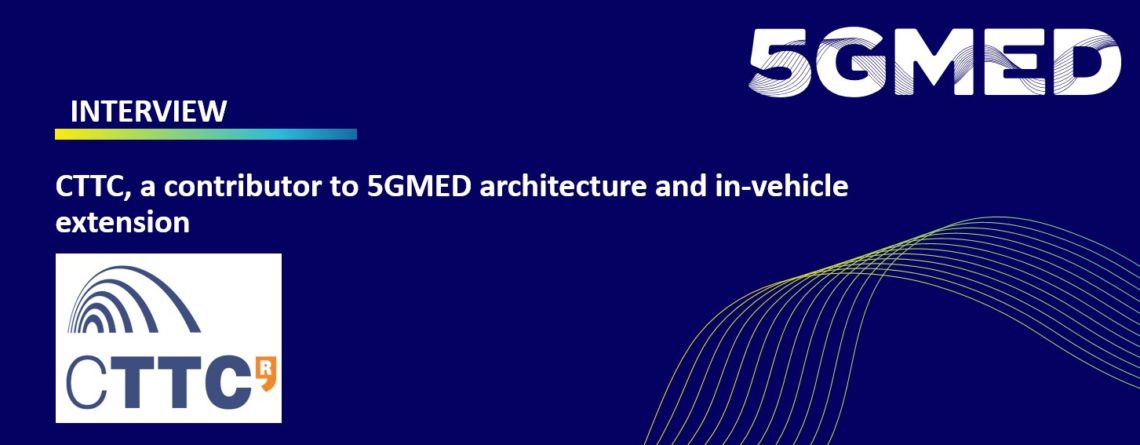CTTC, a contributor to 5GMED architecture and in-vehicle extension
This article is part of an interview series on 5GMED partners to promote the various initiatives the project supports.
The Centre Tecnòlogic de Telecomunicacions de Catalunya (CTTC) is a non-profit research institution based in Castelldefels (Barcelona), resulting from a public initiative of the Regional Government of Catalonia (Generalitat de Catalunya). CTTC’s research activities, both fundamental and applied, are organized into four research divisions: Communication Networks, Communication Systems, Communication Technologies and Geomatics.
Since its creation in 2001, CTTC has participated in more than 150 projects funded by European, Spanish or Catalan administrations, or by direct contracts with industry, in the fields of 5G communication systems, next-generation optical transport networks, embedded systems, software defined networking, satellite communications, positioning systems, M2M communications, smart grids, among others. CTTC also develops strategic internal research projects for the development of proof-of-concepts and experimental prototypes.
Can you describe your role in the 5GMED project?
One of main contributions of CTTC in the 5GMED project is to participate in the definition of the 5GMED architecture, with special emphasis in 5G V2X communications, Mobile Edge Computing (MEC) and Network Slicing;, and to develop the necessary extensions to 5G orchestration MANO to support MEC and Network Slicing mechanisms.
In addition, CTTC will design and implement a vehicle application that exchanges information via V2N and V2I with an application that runs in the Cloud/MEC servers, and via V2V with other vehicles. In particular, CTTC will contribute with the development of an experimental Telematics Control Unit (TCU) as well as an AI-based smart sensor that processes images acquired by a stereo-vision depth camera for the detection of road hazards, such as stationary vehicles and vulnerable road users.
Why the 5G technologies is important?
5G networks will provide ultra-low latency and ultra-high reliability in high mobility and densely connected scenarios. These features will accelerate the adoption of incipient vertical industries which will leverage innovative smart services and applications, such as Cooperative, Connected and Automated Mobility (CCAM) services in the automotive sector. CCAM services will impact in road safety with a decrease of fatalities on the road, improve passenger experience, and contribute towards emissions reduction by increasing traffic efficiency.
Can you introduce MANO solution?
CTTC is an expert research institution on the key topics of network orchestration and software defined networking. NFV Management and Orchestration technologies will be investigated and deployed to provide cross-domain interoperability. The studied MANO solution will support MEC and Network Slicing mechanisms.
What is the impact of the project in short and long term?
The 5GMED project will contribute to a new evolution of communication infrastructures for both railway and highways based on 5G technologies. In particular, the 5GMED project will validate the 5G technologies and Artificial Intelligence (AI) models for the deployment of innovative CCAM services in cross-border railway and highway scenarios.
How does this project contribute to cross-border collaboration between countries and institutions?
France and Spain, due to the natural border of Pireneés, have mainly two cross-border corridors for goods and people: Aldapa-Irún and Le Perthus -La Junquera. In both corridors, a motorway and a railway connection coexist.
During the last years, important efforts have been made in order to make cross-border communications between both countries transparent for the users, for instance, with the High-Speed Train, which finally provided the same rail width between Figueres and Perpignan, not being forced any more to change of train in the border. The 5GMED project can be seen as another step towards providing a unified Europe, where borders are transparent for goods and citizens. Moreover, 5GMED will help to increase the collaboration between regions across borders.
Do not miss our next interview, follow us on our social media for more.


